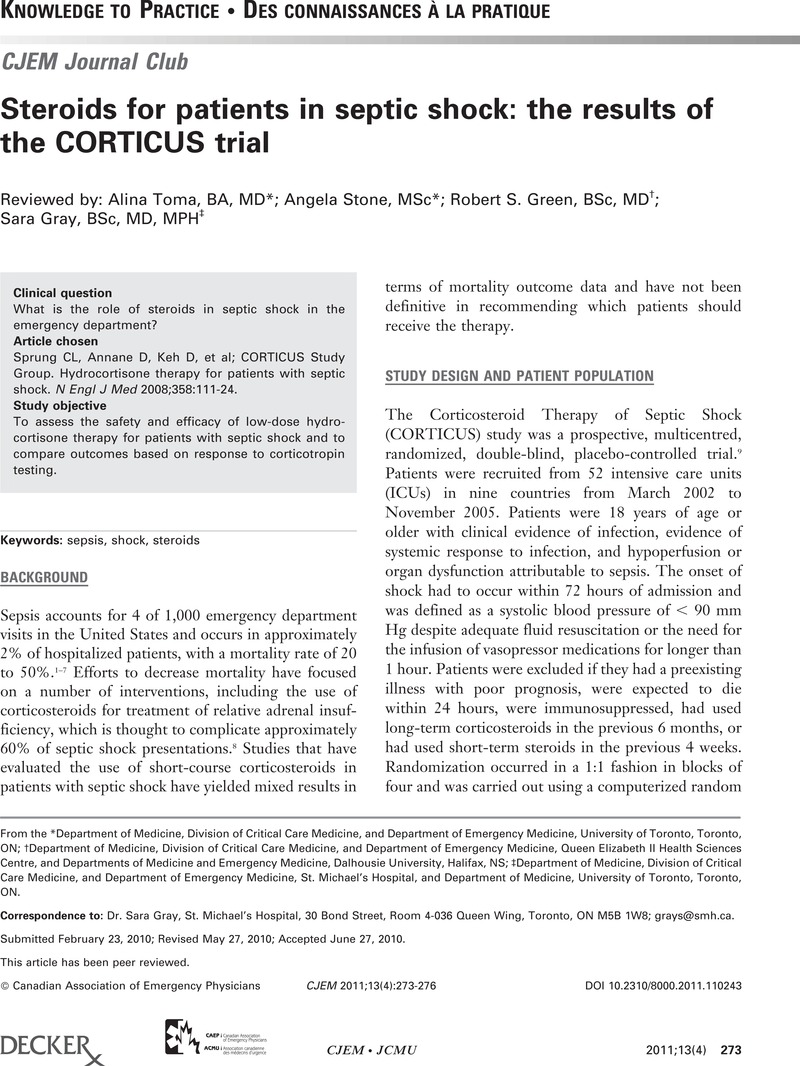Crossref Citations
This article has been cited by the following publications. This list is generated based on data provided by Crossref.
Tarjányi, Zita
Montskó, Gergely
Kenyeres, Péter
Márton, Zsolt
Hágendorn, Roland
Gulyás, Erna
Nemes, Orsolya
Bajnok, László
L Kovács, Gábor
and
Mezősi, Emese
2014.
Free and total cortisol levels are useful prognostic markers in critically ill patients: a prospective observational study.
European Journal of Endocrinology,
Vol. 171,
Issue. 6,
p.
751.
Amirnovin, Rambod
and
Burton, Grant L.
2014.
Pediatric and Congenital Cardiology, Cardiac Surgery and Intensive Care.
p.
3213.
Zhang, Yu
Li, Ruomeng
Zhu, Jie
Wang, Zhaohui
Lv, Shen
and
Xiong, Jun-Yu
2015.
Etomidate increases mortality in septic rats through inhibition of nuclear factor kappa-B rather than by causing adrenal insufficiency.
Journal of Surgical Research,
Vol. 193,
Issue. 1,
p.
399.
Póvoa, Pedro
Salluh, Jorge I F
Martinez, Maria L
Guillamat-Prats, Raquel
Gallup, Dianne
Al-Khalidi, Hussein R
Thompson, B Taylor
Ranieri, V Marco
and
Artigas, Antonio
2015.
Clinical impact of stress dose steroids in patients with septic shock: insights from the PROWESS-Shock trial.
Critical Care,
Vol. 19,
Issue. 1,
Scerbo, Michelle H.
and
Moore, Laura J.
2016.
Surgical Decision Making.
p.
59.
Factor, Phillip
and
Saab, Sammy
2018.
Zakim and Boyer's Hepatology.
p.
194.
Cho, Myung Hyun
and
Kang, Hee Gyung
2018.
Acute kidney injury and continuous renal replacement therapy in children; what pediatricians need to know.
Korean Journal of Pediatrics,
Vol. 61,
Issue. 11,
p.
339.
Dai, Xin-Gui
Li, Tao
Huang, Wei-Bo
Zeng, Zhen-Hua
Li, Qiong
Yang, Yang
Duan, Ze-Peng
Wang, Yu-Jing
and
Ai, Yu-Hang
2019.
Upregulation of Mitochondrial Transcription Factor A Promotes the Repairment of Renal Tubular Epithelial Cells in Sepsis by Inhibiting Reactive Oxygen Species-Mediated Toll-Like Receptor 4/p38MAPK Signaling.
Pathobiology,
Vol. 86,
Issue. 5-6,
p.
263.
Ilias, Ioannis
Vassiliou, Alice G.
Keskinidou, Chrysi
Vrettou, Charikleia S.
Orfanos, Stylianos
Kotanidou, Anastasia
and
Dimopoulou, Ioanna
2023.
Changes in Cortisol Secretion and Corticosteroid Receptors in COVID-19 and Non COVID-19 Critically Ill Patients with Sepsis/Septic Shock and Scope for Treatment.
Biomedicines,
Vol. 11,
Issue. 7,
p.
1801.





